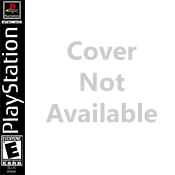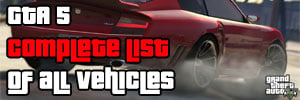Strategy Guide - Guide for Gunship 2000
- Cheats |
- Unlockables |
- Hints |
- Easter Eggs |
- Glitches |
- Guides
Scroll down to read our guide named "Strategy Guide" for Gunship 2000 on PlayStation (PSX), or click the above links for more cheats.

GUNSHIP 2000 HINTS ON PLAY
By Jim Day. Game Designer Gunship 2000
FLIGHT
~~~~~~
Control:
--------
Although it is best to start out in "easy" flight mode,
you should try to progress to "realistic" flight as soon as
is possible. Realistic flight gives a much more precise
control of the helicopter. You should strive to control your
altitude with just the cyclic (joystick) control, and stay
away from using the collective for in flight altitude
adjustments.
Try to use the dual joystick, joystick/keyboard or
joystick/rudder pedals control options. These options enable
you to control the tail rotor. This additional control
greatly enhances flight control. It is much easier to use the
tail rotor to make quick turns than the cyclic. Hard cyclic
turns can result in an altitude loss; a problematic situation
when near the ground.
Altitude:
---------
Try to avoid overflying mountains (except near your base)
unless you wish to get a high view of the countryside. The
altitude gain is just not worth the exposure. Stay low, but
not too low as the discovery of the enemy at extremely low
altitudes gives you little time to react to incoming threats.
It real combat, helicopter pilots seldom fly below 100 feet.
If you are searching for the enemy, an altitude of about 225
feet is probably about right. If you know where the target or
objective is located, go in low and hot to avoid as many of
the enemy defensive units as is possible.
Gauges/Indicators:
------------------
Keep your eye glued to the radar altimeter (the one
located in the HUD - the altitude gauge in the console is
the barometric or pressure altimeter). This indicator shows
your true height to the ground immediately below the
helicopter. As the ground rises up to meet you, this
indicator shows the loss in altitude. The low altitude
warning also sounds when your altitude enters the red zone
(this zone is player adjustable by the "c" or "v" keys).
These subtle altitude changes can mean the difference
between life or that fatal crash. One particular area to
watch is the coast in the Persian Gulf. As you near the
shore, flying from inland, the terrain rises slightly - pay
attention to the altitude change.
It may seem obvious, but pay close attention to the threat
display - give it a glance every so often. Threats can pop up
on the periphery or to the rear that your CP/G can not see to
call out. In those situations, maneuver towards or away from
the potential threat. Keep in mind that as you move towards a
target, the dead (or safety) zone is reduced - this is a
combination of range and altitude.
In general, fly "out of the cockpit" only taking periodic
glances at the console. The HUD provides the key flight data,
and the console should be used only as a backup.
Friendlies:
-----------
Upon reaching the rank of 2nd Lieutenant, you are given
the responsibility of multi-helicopter command. These guys
can accomplish a great deal if you utilize them with care.
With fresh-faced rookies, do not expect then to take on
the enemy single handily - they just do not have the skills.
Just as you had to learn the ropes, these guys also improve
with time. Rank and decorations are the best measure of their
competence.
Their degree of competence is applicable to three
different areas: offense, defense and flight skill. The best
pilots hit the targets with the fewest shots and at the
greatest range; avoid taking damage; and hit their waypoints
right on the mark. Those new guys and less experienced pilots
fall somewhere short of this optimum.
With these limitations in mind, give them something
attainable. Pick-ups, cargo missions, small target groups or
moving targets are a good place to start. They are skilled
enough to always fly to a drop-off or pick-up point if their
last waypoint is somewhere near the location. They even let
you know if they spot a pick-up by communicating "Objective
Sighted!". Position their final waypoint or assign a new
flight path on the location, and they will fly directly to
the point. Of course, they always fly directly to the base or
FARP (accessed by a second press of the "to base" key).
Once they have developed a certain degree of experience,
there is not a single mission they can not handle. Take care
of them, and they will take care of you.
TACTICS
~~~~~~~
S-2 Report:
-----------
Pay attention the unit sightings information in the
report. The order of the four units listed indicates the
frequency of the number you could expect to meet in this
mission. The unit listed first has the greatest frequency,
the second a lesser frequency, and so on.
Toughest Primary?secondary Targets:
-----------------------------------
Headquarters, Depots, Fixed Emplacements and Infantry
Groups provide the greatest challenge. They all have a large
and diverse mix of potentially dangerous units. They also
require a high degree of destruction to achieve the mission.
This combined with the deployed enemy defenders, makes for a
tough assignment.
Easiest Primary/Secondary Targets:
----------------------------------
Moving vehicle platoons, and to a lesser extent moving
mech groups, are the easiest targets. This assumes that you
have found the target. Only a few of the units in the platoon
or mech group stop to engage you - the others try to escape
and continue on to their objective. This makes for a limited
number of enemy shots. As an added benefit, the enemy
defenders must spread out along the path of movement,
thereby, limiting their concentration.
Toughest Single Targets:
------------------------
This is probably all infantry targets and the 2S6 (the 2S6
is found only in Europe). The infantry are tough to destroy
and they have a number of weapons to throw back at you. M261
and M255 rockets can make short work of the infantry.
Hellfires can also be effective, but it may take more than
one to do the job. When in close, blast them with your
cannon. The 2S6's laser guided missiles and accurate cannon
make it an extremely tough adversary. Fire-and-forget
weapons are the best choice as you can not "spoof" its laser
guided missiles. Guiding a TOW-2 or Hellfire-A into the
target can be a dangerous prospect. The preferred tactic is
to fire a Sidearm, Hellfire-B or M247 rockets and immediately
fly away from the target. Even if a laser missile is in
flight, when the 2S6 is destroyed, the missile automatically
drops its lock (this is also true of radar guided missiles -
eliminate the source and the missile no longer tracks). This
tactic should also keep you out of its cannon range.
The ZSU-23(4) and towed guns can also be a tough nut if
you come upon them within their cannon range. Their high
rate-of-fire (especially at the higher enemy quality levels)
enable them to throw out a large number of shots in a short
period of time.
Easiest Single Targets:
-----------------------
Aside from the various structures and buildings, these
would be all tanks and machine-gun armed recon units, such as
the BRDM-2 and EE-9. These units are pretty much sitting
ducks and can be destroyed with impunity. Even if you fall
within range of their machine-guns, it is rare that you take
a hit. These are all good candidates for cannon fire; do not
waste limited ordnance on these targets.
On-line Data Base:
------------------
Until familiar with the various enemy targets and units,
you are encouraged to use the on-line data base (alt-p keys
with a target lock) to secure important information.
Weapons:
--------
You really need to tailor your choice of weapons to the
nature of the targets. This knowledge comes from experience,
the manual and the on-line data base. Try different
combinations on different target types - best done while in
the training mode. Keep in mind that the damage inflicted can
vary; it is not a fixed amount. A target could be destroyed
with one hit on one occasion, but may require two hits on a
second occasion.
Before you reach the level of command access to a Longbow
Apache, rockets can substitute as a poor man's fire-and-
forget weapon. While they take a certain degree of finesse to
utilize, they do have the advantage of flying directly to the
target if launched in constraints. As an added bonus, you can
usually carry a whole passel of them, and set the number to
fire in a salvo. With three different types, choose carefully
and pay attention to the S-2 report.
Sidearm is also a good weapon to consider, as it is a true
fire-and-forget weapon system. While the number that can be
carried is limited, it is a good choice for the wing tips on
Apaches when light air activity is expected. It is more than
capable of silencing most radar sources with the exception of
ships.
Mavericks or Penguins are a must when dealing with ships.
They have the capacity to destroy a ship with a single hit;
not guaranteed with Hellfires or TOWs. Maverick, if
available, is the preferred choice over Penguin since it has
a dual role against ground targets.
A mistake some players make is changing the weapon type
while a guided missile is still in flight to a target. For
example, if you have a Hellfire-A in bound to a target, do
not change the weapon selector to another weapon type. The on
board computer becomes confused, and the Hellfire no longer
tracks the target.
The effectiveness of ripple fire can not be emphasized
more, when engaging closely grouped targets with guided
weapons. Launch one missile, wait a few moments, launch a
second, wait a few moments more, and then launch a third, and
so on. This tactic greatly reduces the total engagement time
over the target, and therefore your total exposure time. It
has the added benefit of eliminating the threats in short
order. Technically, all of the missiles are targeted on the
first target. But after the first target is destroyed, the
targeting system automatically shifts to the next target -
locking the next missile on to that target. This process
continues until all of the targets are destroyed or the
missiles have all hit their targets. If the target was not
destroyed by the first hit, you have another missile
following closely in its wake to finish the job.
Moving Targets:
---------------
Moving targets are not all that difficult to find, if you
keep a few key points in mind. They move at speed of about 25
knots - so less than 1/4 of your average speed. This gives
you an idea as to where they may be along their path. They
always move in the indicated direction, but modify their path
based upon intervening terrain (they avoid mountains, valleys
and rivers). You may discover them off of the path due to
these terrain types. However, they generally move in the
direction indicated.
Moving units that appear to start on a road will more than
likely follow the path of that road, including movement
through road canyons.
Search & Destroy (or Rescue):
--------------------------
These can be one of the most frustrating mission types.
Just keep in mind that the target is out there, and your
intelligence data relating to the suspected location is
fairly accurate. The target should be no more the a few map
units from the indicated location (the mission map is divided
into a 16 by 16 grid - therefore it is divided into 16 x 16
map units). The challenging part is that the target could be
in any direction from the indicated location.
A good clue to the location can be the discovery of enemy
defenders. If you start to encounter these defenders, the
target can not be far away. After all, the defenders are
there for a purpose.
Sea Targets:
------------
Enemy ships can be a bit of a challenge, especially if you
come across them at short range. If you are to engage known
ship targets, approach them form the seaward side and pick up
altitude to about 300 or so feet. This should give you enough
range to deal with anything they may throw at you.
Air Targets:
------------
Now these guys can give you some real trouble. Pay very
close attention to the S-2 report's section on enemy
aircraft. If it states "extremely heavy", you best be
prepared for some heavy action. Stingers and Sidewinders are
the weapons of choice in this case. Stingers are more than
capable of dealing with most of the enemy helicopter threats
with a single shot. There is no doubt when firing a
Sidewinder. Your can is also more than capable of taking out
an enemy helicopter. It this case, you will have to get in
close.
Enemy high-performance aircraft definitely require
Sidewinders; in most cases, Stingers just do not have the
punch to take one out with a single hit. It is a truly lucky
shot if you are able to get a hit with your cannon. Keep in
mind, that these guys must be dealt with, since they keep
coming back until they are damaged or destroyed. The good
thing is that you do not see them all that often - after all,
helicopters just do not tangle with fast movers all that
often.
Jammers, Chaff & Flares:
------------------------
Jammers should be activated at the first notice of an
enemy inbound threat. The jammer either "spoofs" the enemy
missile or it does not - there is no grey area in this
regard. If you do jam the missile make sure to move out of
its flight path. Jammed missiles do not disappear, they just
continue on a straight flight path. That is why it is a good
tactic to keep targets on the periphery rather than flying
directly towards the target. With this approach, the jammed
missiles miss to the left or right. The IR jammer has an
equal chance of jamming a missile each time it is attempted.
The radar jammer is a different story. The enemy units
frequency hop until they are able to defeat, or "burn
through" your jamming signal. That is why initial missiles
are jammed and later missiles can not be jammed. Turn off the
radar jammer after use; remaining active reduces its
effectiveness.
Chaff and flares are close-in defenses. Launching chaff or
flares when the missile is still 2 km away is very
ineffective. It is purely a matter of timing. Allow the
missile to approach and then launch the decoy. If you launch
too soon the chaff cloud will have dissipated or drifted off
or the flares will have hit the ground or burned out. If you
launch too late, the missile will not be fooled, and will
still track your helicopter. If possible, break left or right
after you launch the decoy; this enhances the effectiveness
of the decoy. You can lose constraints or even drop the lock
while targeting for guided weapons (Hellfire-A and TOW-2).
The missile continues to fly in a straight line. If you
re-acquire the lock before the missile flies by the target or
it is able to turn quickly enough to maneuver to the target,
it will still impact.
Another effective tactic to avoid enemy missiles, is to
drop down or fly behind hills. If you can mask your signature
to the missile, it losses its track. That is why it is
advisable, when possible, to approach targets from terrain
rather than over flat ground.
As a last ditch choice, it is also possible to "dodge"
missiles by making quick last minute breaks to the left or
right. You do not have the quickness and sharp
maneuverability of a fighter aircraft. As a result, this
maneuver is a real challenge as it requires precise timing,
but at times may be your only hope of escape. The maneuver is
much more effective against radar guided missiles than IR
guided missiles. Radar guided missiles have a much larger
turning radius then IR missiles, and are less able to respond
to quick breaking turns. IR missiles are designed to engage
fast breaking targets.
Training is a good place to test these tactics and
maneuvers. You can get your timing down and locked without
any damage to get in the way of your tests.
SCORING
~~~~~~~
Your main purpose in life is to destroy the primary and
secondary targets. You are not rewarded for missing those
objects, even if you manage to destroy everything else out
there. The really successful pilot are rewarded for hitting
the targets and getting back in less than thirty minutes or
less. This may mean that you may have to set your sights to
just the primary or the secondary on certain missions. Make
sure that you get at least one of them, preferably the
primary, and get that helicopter back to base. They are too
expensive to leave littered about the battlefield.
To maximize your score, and consequently your success and
rewards, destroy all of the targets in the primary and
secondary. Even though you can achieve the mission by
destroying less than the total number of targets - get all of
them while you are there. If possible, eliminate all air
targets encountered. If you have to make a choice, skip the
buildings, recon units and tanks, and concentrate on the
missile armed units and anti-aircraft guns. After all, how
many points do you expect to score for torching houses,
churches and mosques.
You are definitely recognized for eliminated the bad guys
while flying smaller and less well armed helicopters. It is
especially apparent is you fly one of those helicopters
yourself. You have probably noticed that the Longbow Apache
is an extremely powerful helicopter. Well, the Task Force
Commander has also noticed this fact. He is impressed with
the guys that fly Defenders and Comanche Scouts.
If you started with a pilot that has suffered a number of
setbacks, i.e. did not get either the primary or secondary on
a series of missions or consistently has walked back to base,
you may be further ahead to start over with a new pilot. That
guy probably has too many reprimands in his file to achieve a
high rank before forced retirement gets him first.
If you can avoid it, never decline missions or abort a
campaign. These are big black marks on your record. And by
all means, try not to lose any pilots. It is your
responsibility to take care of them. If you lose too many,
you may find yourself in civilian clothes flying a traffic
helicopter.



